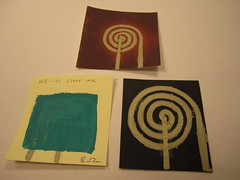
These paper and fabric speakers are made by running 5-9V amplified sound signal through a very conductive coil in close proximity to a magnet. Unlike most speakers that have the wire coil wrapped cylindrically and placed around the magnet, here the coil is in the plane and directly adhered to the membrane that moves the air creating sound.
Inspired by Marcelo Coehlo’s paper speaker and Vincent Leclerc’s Accouphene textile speaker.
Also see: etched fabric speaker, carved and engraved wood speakers, plated seashell speakers
Vinylcut copper coil
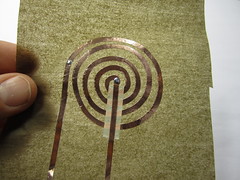
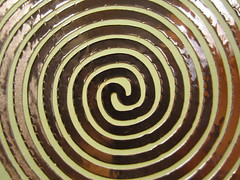
Painted silver coil

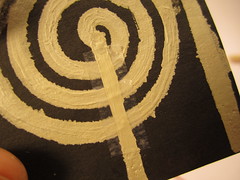
Screen-printed silver coil

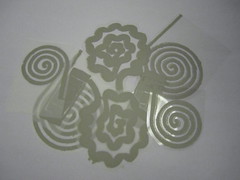
Gilded coil
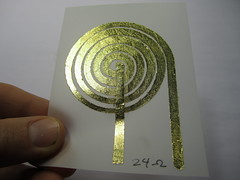
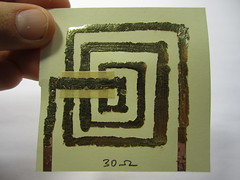
Video
Video of thermochromic and liquid crystal inks affected by the heat from speaker coils
Technical
The coils can be made from a variety of conductive materials. Copper tape, Conductive fabric tape, conductive fabric and stainless steel thread work really well. Gold leaf does not work as well (yet!) in comparison. The coil can be one sided or two sided. A continuous spiral gives better results than one that backs up on itself.
The coils can be fused to a variety of membrane materials such as paper, vellum, veneer, fabric, transparency, tissue paper…
Jean-Babtiste Labrune pointed out this planar coil calculator >> http://www.circuits.dk/calculator_flat_spiral_coil_inductor.htm

Variations
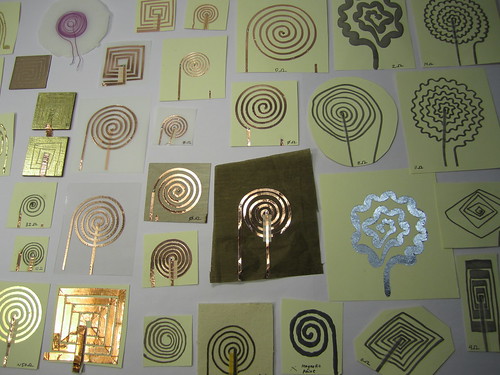
Step-by-Step Instructions
Ingredients: copper tape, conductive fabric, stainless steel thread, gold leaf, paper, wood, fabric, double-sided sticky (studio tack), size (gold leaf tacky adhesive)
Equipment: Lasercutter, vinylcutter (Craft Robo), scissors, paint brushes, carving tool
Downloads:Illustrator file of speaker coils, some of which were hand drawn
Create a coil shape
Draw and scan or create in software.
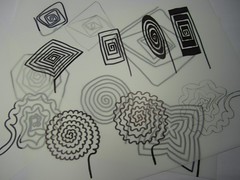

Cut the coil
Depending on what material you are using (copper tape, conductive fabric, thread, paint…) you’ll have different ways of creating your coil.
Copper tape on Craft Robo, double-sided sticky on lasercutter


Conductive fabric tape on lasercutter
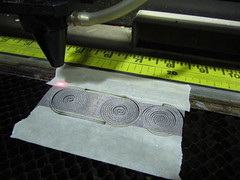
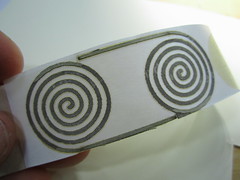
Conductive fabric with fusible interfacing on lasercutter

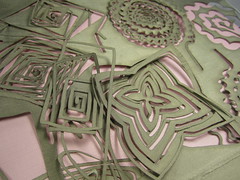
Adhere coil to membrane
Steel thread on masking tape
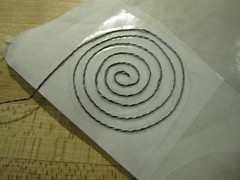
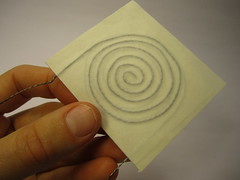
Sound amplification circuit
Using a TIP 120 transistor to control a 5V or a 9V power supply from a microcontroller, in this case a sound circuit taken from a toy that plays the same song every time the button is pressed.
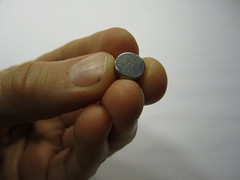

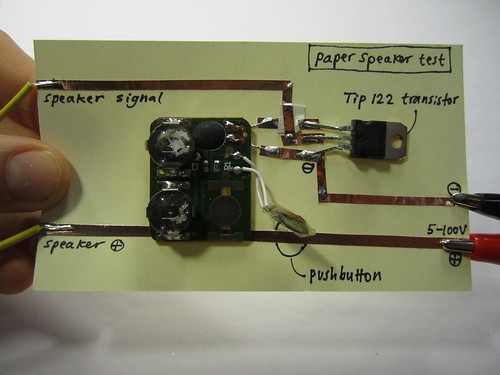
Tom Igoe’s schematic >> http://itp.nyu.edu/physcomp/Tutorials/HighCurrentLoads

